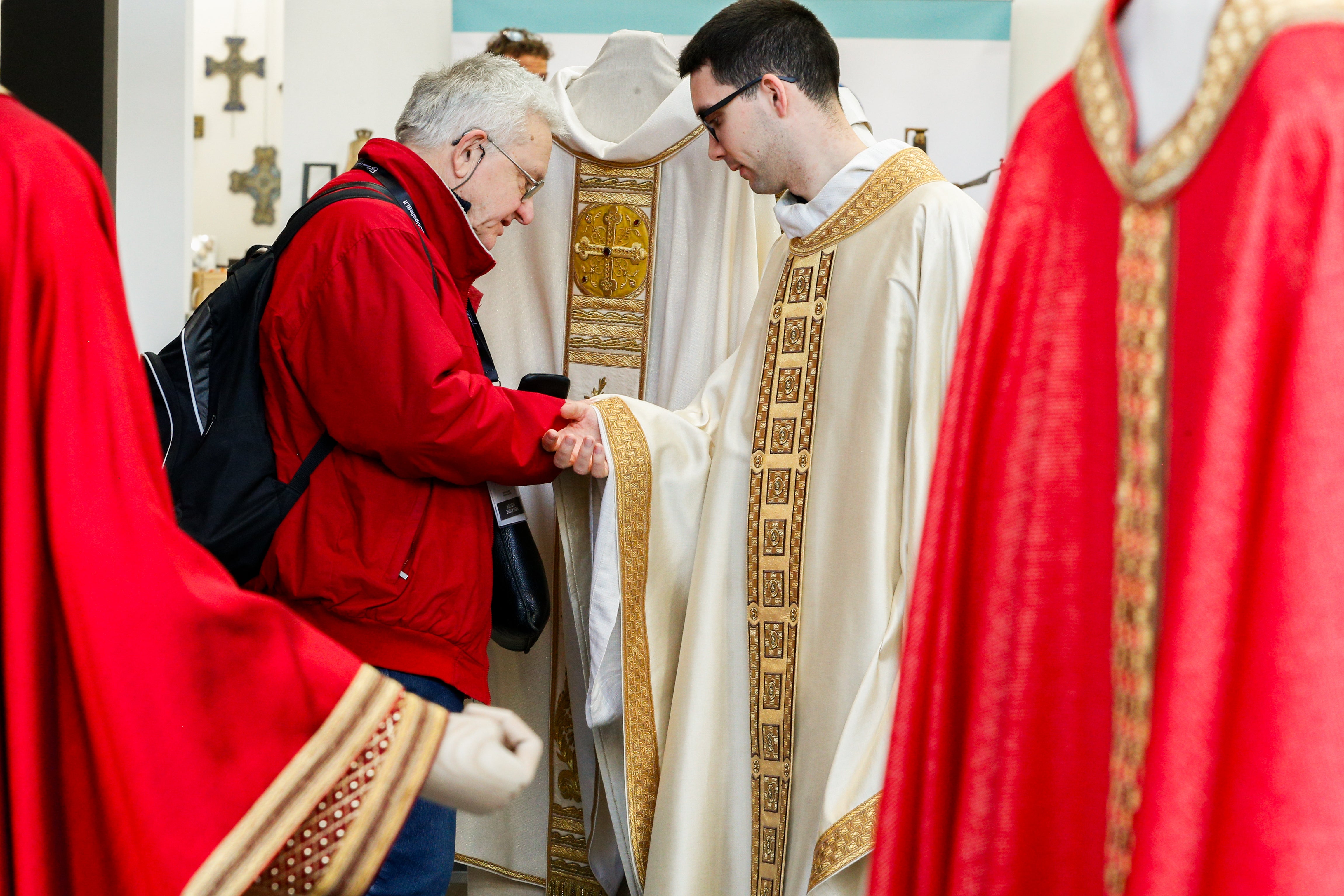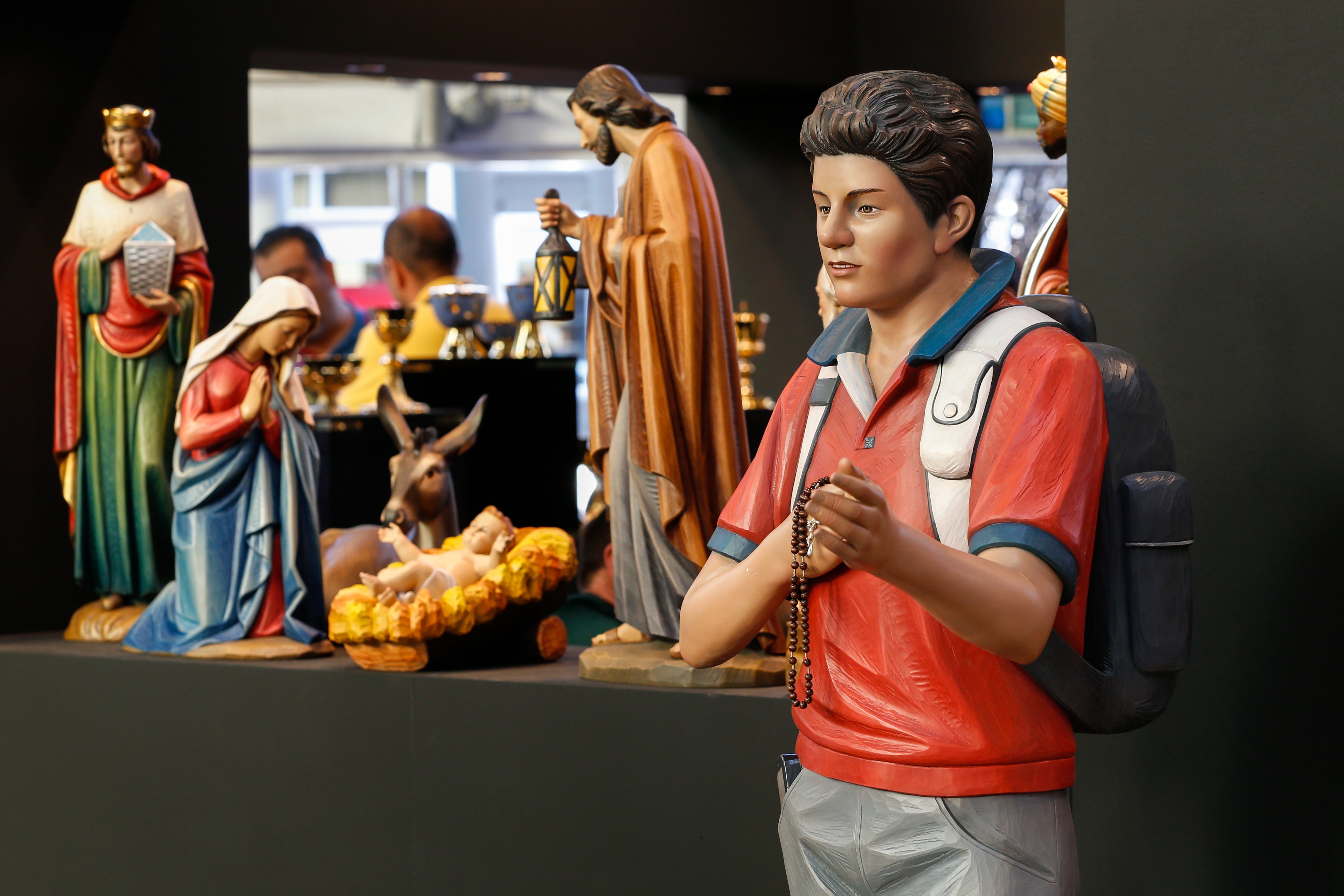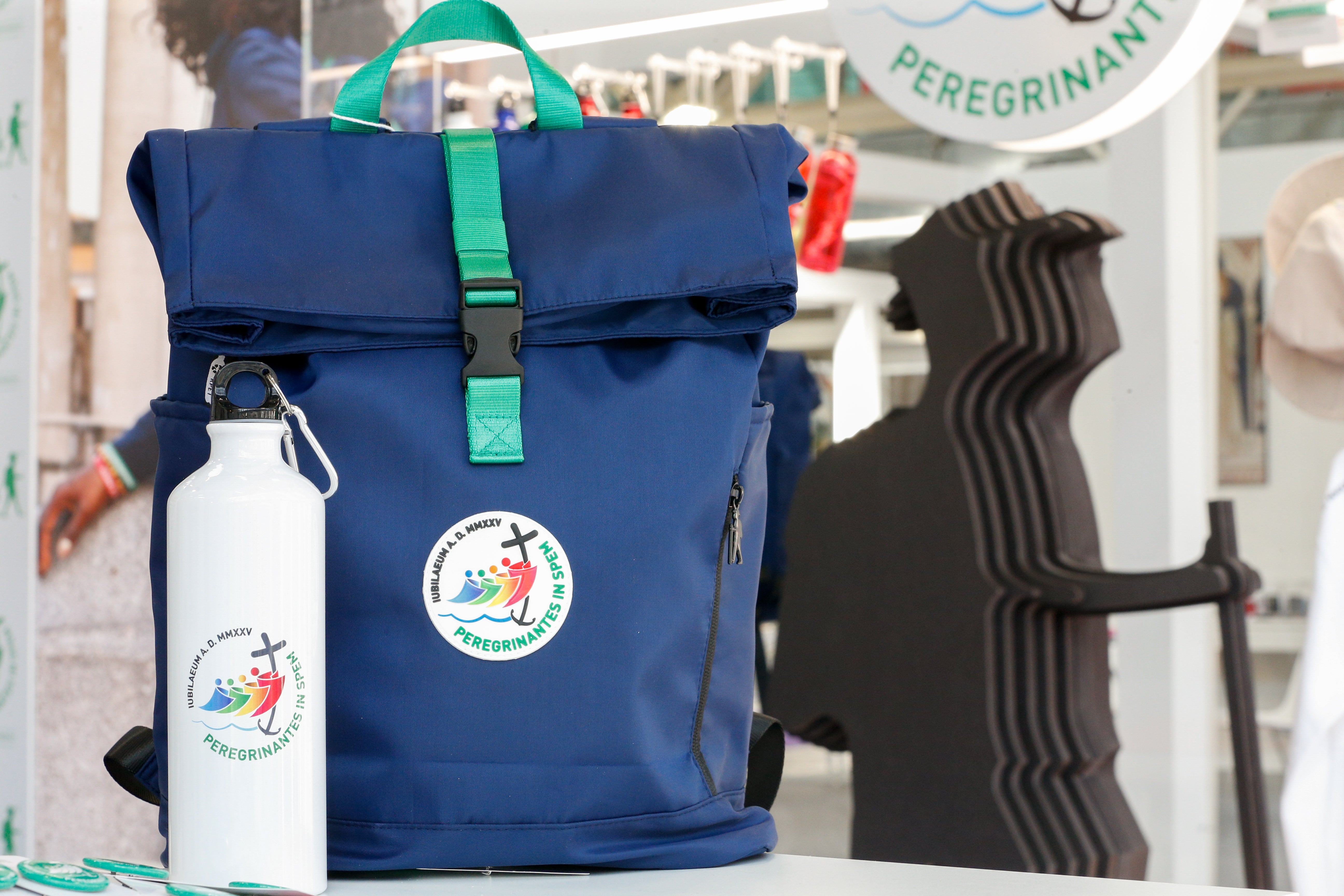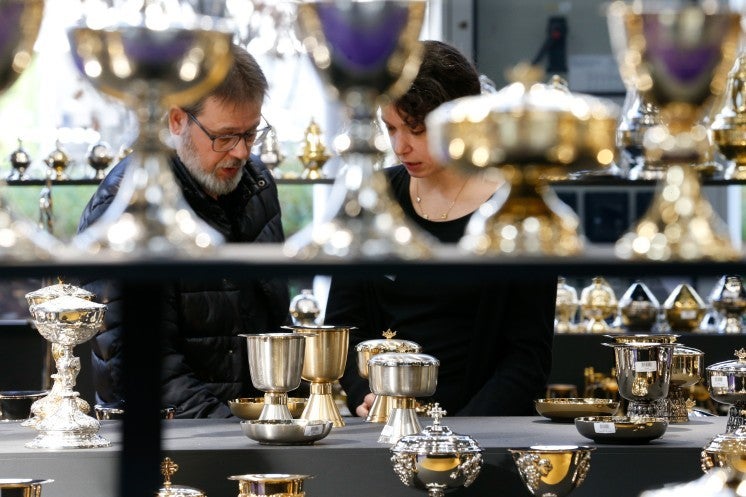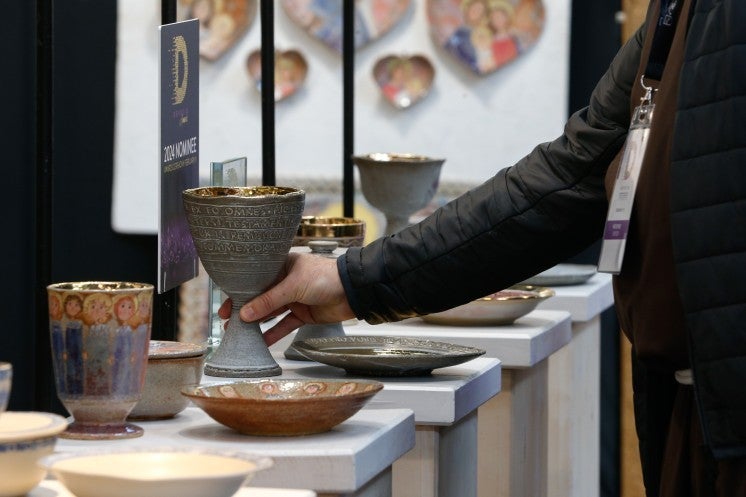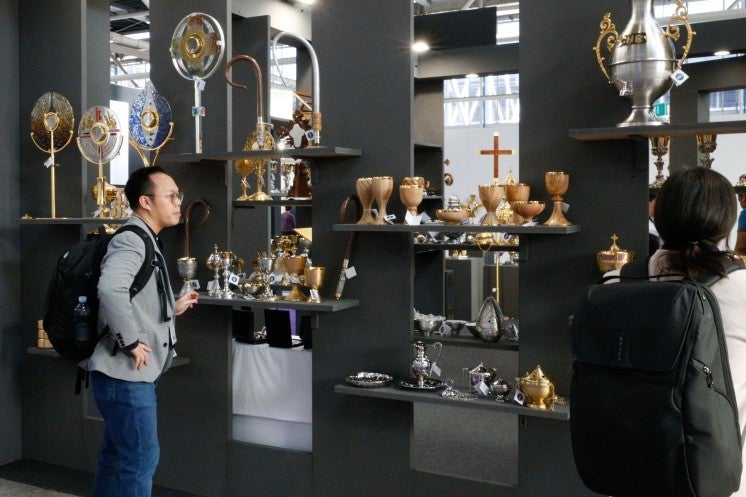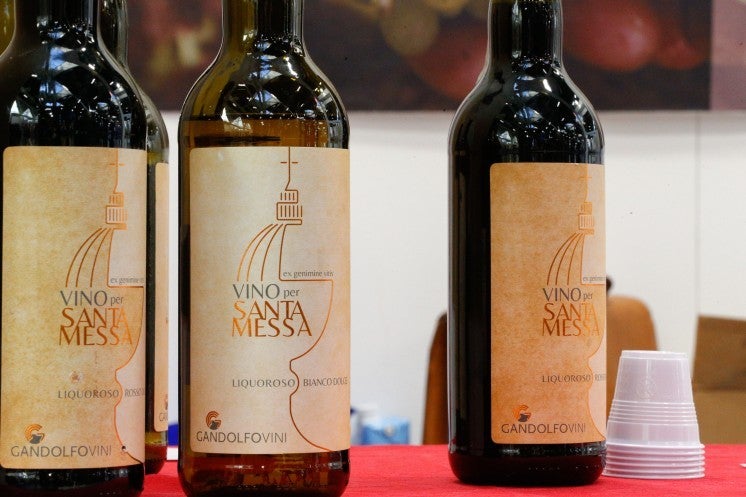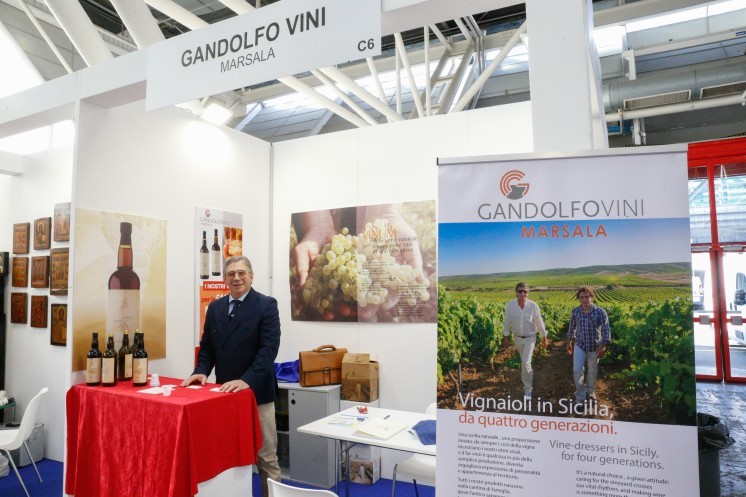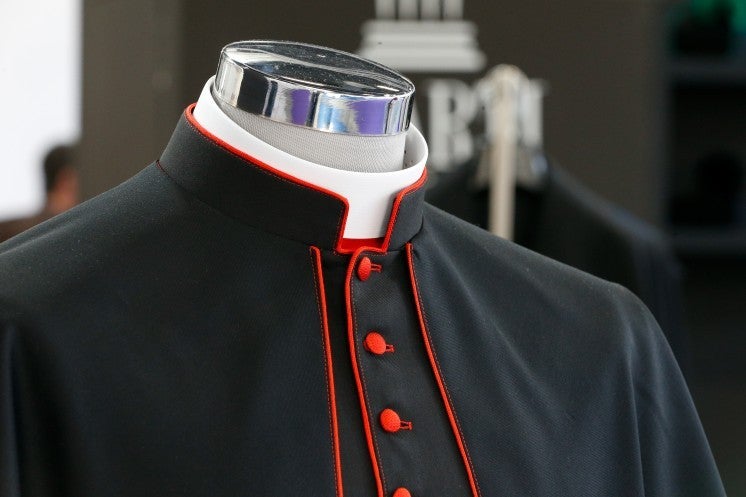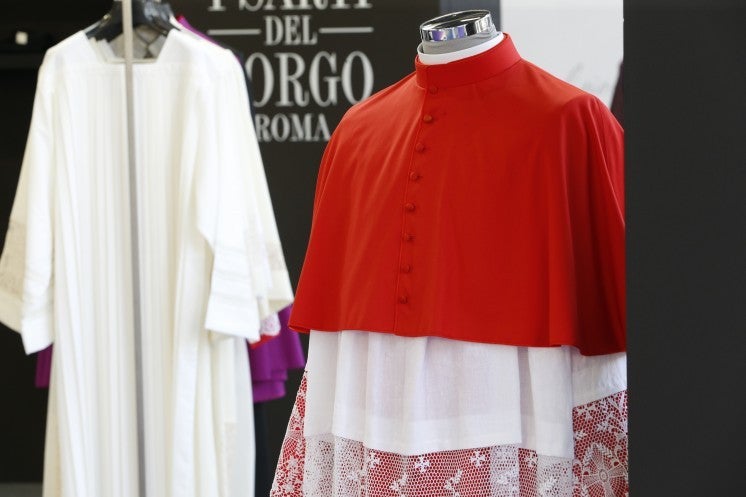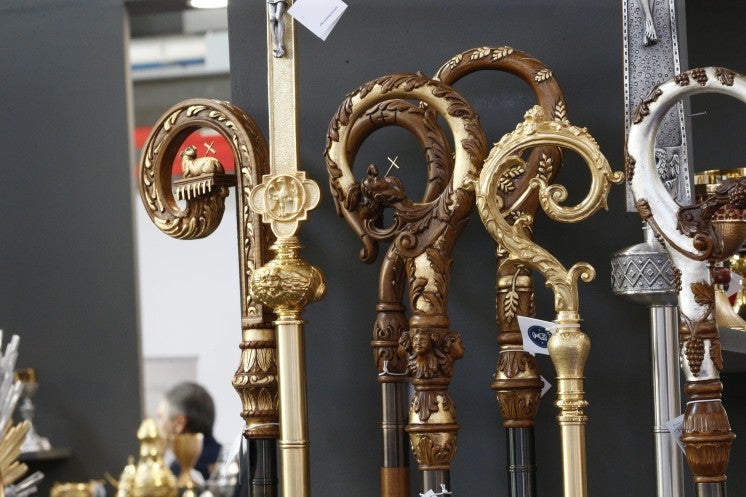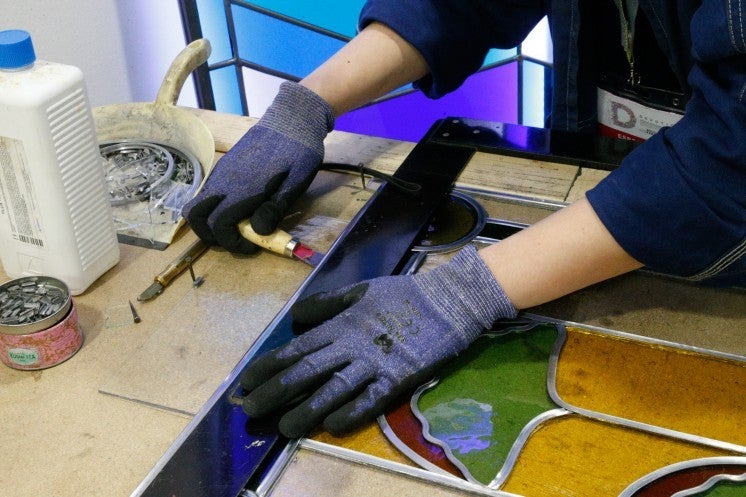Chalices and chasubles: Fair displays industries revolving around religion
BOLOGNA, Italy (CNS) — Incense slowly drifted upward, not below the vaulted ceiling of Bologna’s Basilica of San Petronio, but toward the fluorescent lighting and steel beams in the city’s convention center, which for three days bore the trappings of a temple rather than those of a corporate meeting place.
From Feb. 11-13, the Italian city hosted more than 200 vendors of religious art, liturgical attire and services for churches, who showcased their offerings at the Devotio International Religious Products and Services Exhibition, sponsored in part by the Vatican Dicastery for Culture and Education.
Retailers, owners of religious shops, wholesalers and manufacturers of religious goods were the primary buyers at the convention, though priests and religious sisters also represented a sizable portion of the crowd wandering through Bologna’s convention center. Organizers said more than 3,000 people attended.
The rows of booths displayed items ranging from liturgical supplies and garments to wine and unleavened bread for consecration; a booth dedicated to promoting the Camino de Santiago, a popular pilgrimage route in northern Spain, also made a splash.
One day a group of Franciscan friars could be seen assessing chalices and patens, while religious sisters browsed wall art featuring the faces of saints painted onto hand-carved wooden shapes. One young priest shopped for a new chasuble in the company of his parents.
Solvari garments, a liturgical vestment producer from Bergamo, Italy, prominently displayed a Roman chasuble, predominantly used in the celebration of Mass prior to the Second Vatican Council. A company representative told Catholic News Service he had not seen increased sales of Roman chasubles in recent years, but he put it at the front of his display “because everyone can appreciate beauty.”
Enzo Gandolfo of Gandolfo wines from Sicily had bottles of Mass wine available for sampling. Although wine used for consecration is not necessarily intended to optimize taste, “it’s important for priests to have something they like” when celebrating Mass, he told CNS.
Reappearing constantly among the rows of devotional items was the face of Blessed Carlo Acutis — the Italian website designer who catalogued Eucharistic miracles and Marian apparitions online before dying from leukemia at 15. Many hoping for his canonization are calling for him to be declared patron saint of the internet.
Elisabetta Bertelli, founder of Stringila religious art, displayed a cross-shaped pillow with Blessed Carlo’s face. She said the pillows are not designed to be slept on but to hold onto during prayer, putting the person praying in physical contact with the cross.
Bertelli told CNS she wanted to put Blessed Carlo’s face on the pillow with the hopes of spreading the beauty of prayer to young people. “He’s a young person that has inspired so many,” she said.
Another booth was dedicated to official gear for the Holy Year 2025, including the pilgrim’s kit and backpack which was presented at the expo. The kit includes items necessary for any pilgrim: a hat, rain poncho, water bottle, scarf and, of course, a rosary.
“I know well how useful a backpack can be during a pilgrimage and how important it is to preserve it, with the signs of time and wear, as a witness full of memories of those days of prayer and reflection, full of emotions and therefore unforgettable,” said Archbishop Rino Fisichella, the Vatican official in charge of coordinating plans for the Holy Year, in a statement. The Holy Year office will begin distributing the pilgrim kits to individuals online and at an official Holy Year shop in Rome in March and also will distribute them in partnership with dioceses and pilgrimage groups.
Beyond religious products, vendors at the expo also offered services such as designing and installing audio systems or lighting structures for churches.
Thomas Nell, senior partner at Spotlight — a professional lighting services firm for the performing arts — said that while his company does not specialize in lighting for religious spaces, churches are a performative as well as contemplative structures, and proper lighting “can help lift someone upward spiritually.”
Yet churches often “go for what is cheap” and buy harsh fluorescent lights, he said, even though good lighting “can change the look of an entire space.”
In one of the most engaging booth displays, Sofia Malavasi was scraping and shaping stained glass to form a floral decal. An apprentice at a local stained-glass workshop in Bologna, Malavasi told CNS that as a young person she hoped to advance the rich legacy of stained-glass work even as interest in churches and religious art wanes. She said that when she started her training, she was surprised and encouraged to learn how many people have stained glass in their homes.
But Malavasi was most proud of her workshop’s coordination of the massive restoration of the windows in the Basilica of San Petronio in Bologna.
“It was incredible to see the difference,” she said, recalling how volunteers in the basilica were struck by how much natural light entered the space “just by restoring the glass to how it was intended to look.”
